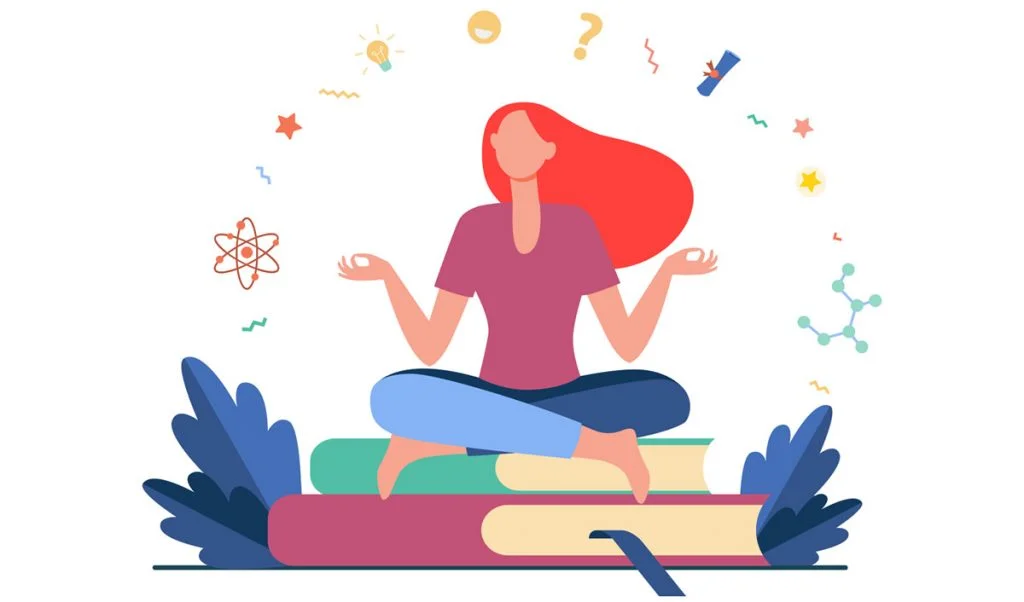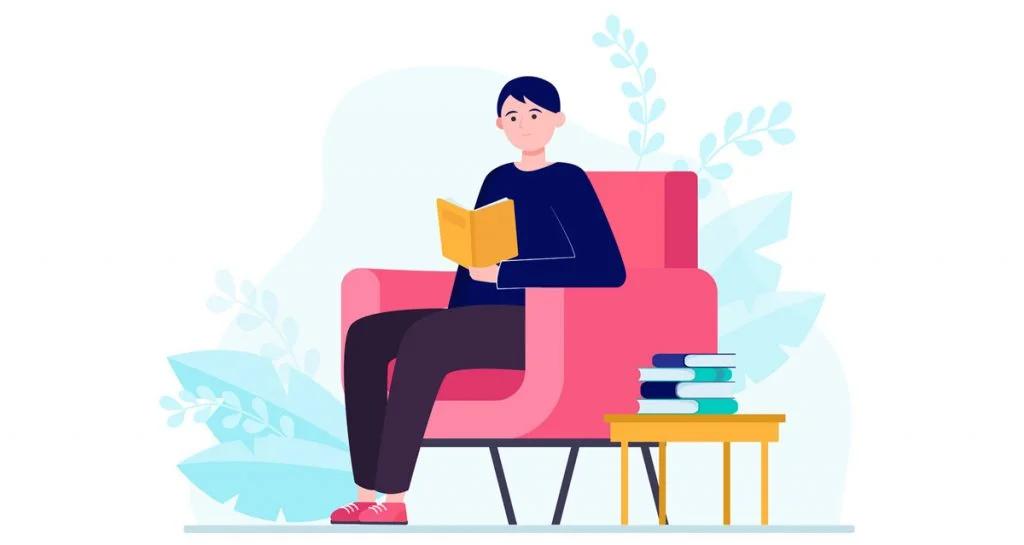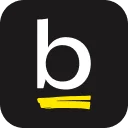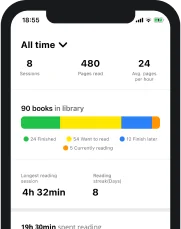Critical reading is an essential skill every reader should possess. While reading is already well-known for its numerous physical and mental health benefits, critical reading turns all the knobs up to eleven. Here at Basmo, we are well aware of the importance reading plays in your life and we want you to be able to maximize the knowledge and value you are able to extract from each individual reading session.
That is why we decided to tackle one of the most interesting aspects of reading and serve you every piece of information you can possibly need in order to become not only the ultimate reader but the ultimate critical reader as well.
What Is Critical Reading?
The critical reading definition describes the process as a form of language analysis to a certain extent, involving a deeper examination of the text, the ideas, themes, and claims presented. The critical reading meaning goes a lot deeper than that.
Critical reading involves a higher level of involvement from a reader than recreational reading. The reader is supposed to apply certain theories and thought processes, and raise questions and the final result is better comprehension and enhanced clarity. As a process, this means that the reader should always keep an open mind, read slower than usual, pay extra attention, take notes, and try to put himself or herself in the shoes of the author’s target audience.
Why Is Critical Reading Important? The Benefits of Critical Reading
Critical reading plays an important role in the reader’s development and comes with a plethora of benefits. Even though reading simply for pleasure and as a pass-time activity is an incredibly rewarding activity, critical reading takes things to a new level. Here’s why critical reading is important.
1. Mental Development
One of the most obvious aspects we need to take into consideration when discussing the importance of critical reading is the effect it has on our minds. Like any complex mental task we take on, critical reading is an amazing workout for our brains.
While reading is already known to have a beneficial effect on our brain, critical reading is actually an even better exercise. By getting more involved in the text, taking notes, and analyzing more aspects of the language and subtext, more areas of our brain are being activated compared to classical reading. The neuronal connections are being strengthened, new neural paths are built and our brains develop better and faster.
Needless to say, mental development achieved through critical reading can be extremely valuable in many aspects of our lives.
2. Better Understanding of the Text
Somewhat obvious, reading critically has an immensely positive effect on how much, how well, and how quickly we understand what we read. While during regular reading quite a lot of skimming occurs, which eventually leads us to inevitably miss out on certain pieces of information we are forced to deduct later from context, critical reading means no stone is left unturned.
Reading critically implies a level of involvement in the activity of reading that doesn’t allow us to skip any unknown words, or any connections to other events the author is making, which in turn means that any given sentence, paragraph, or section of the text cannot be considered read until the reader understands it 100%.
3. Critical Thinking Improvement
Critical thinking is an essential life skill, defined as one’s ability to understand, synthesize, conceptualize, analyze, interpret, and evaluate information. What this means is that a critical thinker takes nothing at face value and filters all information through his or her own thought process.
Critical reading is a powerful tool for developing the necessary mental attributes of a critical thinker. This type of reading is an essential mental exercise through which information read is analyzed and processed at a much deeper level.
Any thought, idea, or concept expressed by the author needs to be observed, judged, and carefully analyzed while critically reading. The same mental process is involved in critical thinking, but that applies to all information received through any other channels, not only reading. Needless to say, being able to distinguish between real and fake news for example is absolutely essential nowadays. That is the power of critical thinking and critical reading is therefore a great means to an end.
4. Remembering More From What You Read
It’s not unusual for us to forget many parts of what we read. After all, our memory is something we have little to no control over. Our brains normally decide, through processes we are not actively involved in, what information is worth keeping and what can be forgotten.
The best we can do when it comes to our memory is nudge it in the right direction whenever we feel that we absolutely need to remember a certain piece of information. And even though it may sound odd, we do that using tricks.
Tricks like repeating a name several times in order to remember it, writing down essential information, mnemonic devices, and many others have been proven effective.
Critical reading uses some of the same tactics: it is not unusual for a reader to go over the same paragraph several times before being completely sure all the information is understood, and a critical reader will often take notes in order to structure the gathered information in a more facile manner.
As mentioned earlier, this process of analyzing the text to a deeper level gets more parts of our brain involved, which in turn tricks it into creating the neuronal connections that are required for remembering a lot more information than you would through regular reading.
5. Better Logical and Problem-Solving Skills
Like any mental exercise, critical reading has effects that go way beyond the obvious. While at first glance, it would seem logical for critical reading to have benefits that are strictly related to reading, speech, and text comprehension, things are quite different in reality.
Given the strong connection to critical thinking and the way it improves this skill and what an effective brain exercise it is, the ramifications of the critical reading benefits extend over a much larger spectrum: better decision making, a decluttered mind, crisper logic and even an ability to solve problems faster, better and with less effort.
Give Your Reading Experience
An Extra Boost With Basmo
Track the books you read, monitor the time you spend reading and keep notes on your reading habits and how it makes you feel. You can set yourself targets for the time you spend reading and you can get notified whenever you’re behind on your reading time.
What Are the Most Important Steps of Critical Reading?
Now that you have a better understanding of the critical reading process, what it means, and why it is important, it’s time to get a little more into the “how”. Since critical reading is an active process that requires a good amount of effort, it also needs a good structure in order to yield the best results.
Because we know how important it is for you to be able to extract maximum value from each and every reading session, he created a comprehensive guide to critical reading that is guaranteed to help you achieve your top potential.
Step-By-Step Critical Reading Tutorial
- Read normally. The first time around, read the given paragraph just to get a rough idea about the theme, and main idea. It’s fine to just skim it to get prepared for the next steps.
- Read again, more carefully. Read each sentence carefully, trying to understand the main concepts, and pay attention to details. Don’t hesitate to repeat this step until you’re comfortable moving on.
- Make notes. Write down the important aspects of the text and any particularities that stand out. Make a note of any questions you feel you should be able to answer later. Jot down how the piece of writing makes you feel, whether you agree or not with the points made.
- Understand every word. Search for any words you are unfamiliar with, and do research about historical events or concepts that are mentioned so you better understand the context.
- Analyze every word. Pay attention to what kind of words are used and try to understand why. Put yourself in the author’s shoes and try to imagine why the ideas or thoughts are expressed using those particular words. Is the author trying to convince you to believe a concept or philosophy, or just trying to entertain you?
- Practice metacognition. Try to understand what you are thinking about what the author is thinking. Challenge the ideas, and concepts, and decide whether you agree with the author’s point and why. Try to imagine if there could have been a better way for the writer to present those ideas.
- Draw your conclusions. Once you are comfortable with the mental process you filtered all the information through, decide for yourself if that particular paragraph was your cup of tea, if you enjoyed reading and analyzing it, what you learned, and to what extent you agree with the writer’s ideas and how he expressed them.
Critical Reading Strategies & How to Read Critically?
While our step-by-step guide does shed some light on the whole process of reading critically and the most important stages of a reading session, it is also important to know that you will need to apply a couple of strategies in order to achieve the best results.
That being said, since reading critically is, to a certain extent, the highest level of reading, it is easy to anticipate that you will need pretty much every tool and strategy you can think of in order to achieve your top potential. Here are some of the most relevant reading strategies you will need to use in order for your critical reading sessions to bring you the value you are looking for.
1. Previewing/Prereading
The early stages of your critical reading sessions should always be dominated by the previewing strategy. Skimming the book or reading material you are about to go through is going to help you gain a vague idea about its content.
This is important mainly because it will reveal what you should be expecting while reading, how the text is structured, and where the most relevant information is physically located within the book. That way you will know right off the bat what passages you will need to pay extra attention to.
Previewing involves reading the title, looking at chapter names, and reading the first and last paragraphs from each chapter, among other things.
2. Active Reading
Once the previewing stage is over and you already have an idea about the content you are about to get into, it’s time to start reading actively. Active reading is a strategy that involves complete dedication to the text you are going through.
You will need to pay attention to every single word and understand its meaning and role in the context it is used. Through active reading, you are supposed to gain a complete understanding not only of every single particular word but also of the text as a whole.
Active reading involves paying attention to every detail, every description or metaphor, and looking further than the actual text. By reading actively, you will gain an understanding of the big picture the author is trying to paint through the content at hand, what the writer’s intentions and goals are, and whether the ideas and themes were properly represented in the book.
Through active reading, you will also analyze the text in a more logical way. You don’t need to simply understand the information, but to be able to actually place it in a logical context. That is why you will constantly need to look for patterns and connections.
You should analyze the way the information is placed in relationship with other ideas, while also taking into account the actual way the author is able to bring their ideas to life. Look at how effective the author is in their use of language, and how clearly he is able to deliver the data and make their point.
3. Questioning
Gaining a deep understanding of a text cannot happen without asking questions. Questioning is an integral part of the comprehension process and plays a hugely important role when it comes to critical reading.
By raising questions while reading and trying to find the answers, you force yourself to analyze the text in more depth and to think critically. You start making connections, you discover the true meaning behind the words you read, and you learn to place the information you acquire through reading and answering questions in a big-picture context.
4. Summarizing
While this is not a mandatory strategy to use when you read critically, it’s a good idea to do it at least once in a while. Summarizing involves extracting the main ideas and the main points from the reading material.
Through summarizing, you will realize the truly important data in the text and you will get to use your own filters and thought process to decide what information is worth noting.
Not only that but putting pen to paper will force you to establish a structure and a logical order for the information you just acquired through critical reading. This will have a positive effect not just on your comprehension levels but also on your retention.
You are more likely to better understand and remember what you read critically whenever you also add this additional strategy as an added layer of mental processing.
5. Evaluating
An important part of critical reading is, obviously, actually being critical. Through the evaluating stage, you get to process and judge the writer’s artwork with a critical eye. You need to analyze the quality of the writing, the efficiency the author displays in making their point, how well they are able to keep the reader engaged, and what techniques they use throughout the material.
It is your time to wonder what could have been done better. What would you change? What could have brought more value to the content? Are there any points the author failed to bring an accurate explanation for?
Critical Reading Tools
As you can see, the process of critical reading is pretty complex and could be rather time-consuming as well. But considering the rewards, it is well worth your time and trouble. Not only that, but with the right strategies and tools, in time, things can get a lot easier. Reading tracking apps like Basmo can make the process of critical reading a lot more effective and less intimidating.
Going into the activity of critical reading with the right mindset is essential. Let’s have a look at some important types of critical reading strategies and how Basmo can be of help.
1. Be Organized
While this is one piece of advice that can be considered universally valid, it is especially helpful when it comes to reading critically. Discipline is an invaluable attribute for the critical reader and Basmo can help you develop some really healthy reading habits.
The app allows you to set yourself a reading schedule, easily customizable, with the possibility to set different times for reading every day, according to your needs.
Not only that, but it will also send you notifications whenever it’s time for a reading session.
That way, you will never miss a scheduled reading session and in time, you will develop healthy habits, turning you into a more organized and therefore efficient reader.
2. Don’t Read Before Bed
Even though it may seem obvious, it’s worth mentioning that active, or critical reading is not an activity you will want to get involved in before bed. We know that reading before bed has certain benefits, but critical reading is a much more complex process.
Critically reading before bed can mean that you are either too tired to perform the best analysis or that this intense thinking process won’t let you fall asleep too quickly. Again, use Basmo to schedule your reading sessions at the right time every day.
3. Annotate
As mentioned above, note-taking is essential for the process of critical reading. Whether it’s underlining keywords or phrases, jotting down some of your own ideas about the text, or highlighting the words that best express the essence of a certain paragraph, that is an important step of the process.
Luckily, Basmo can help with all that. You can say goodbye to ruined books and countless paper notes you can barely keep track of. With Basmo, your smartphone becomes a valuable little wizard.
While a reading session is ongoing, Basmo allows you to take notes directly on your mobile device. All you need to do is type your thoughts, and observations and they will be automatically saved. Not only that, but you can also edit and format the notes however you see fit. That way, you will be a lot more organized.
When it comes to annotating, while most people still do it directly on their books, ruining them, Basmo users have the amazing opportunity to do that digitally.
Thanks to the page scanner feature, Basmo can help you create digital copies of the page or paragraph you are critically reading, directly through your phone’s camera.
Once the page is scanned, you can either extract the text or start making your annotations.
Needless to say, this feature has several other benefits, including seamless quote saving.
4. Contextualize
Understanding a text can usually be a lot easier to do if you have the right idea about the time and place it was written. Whenever you critically read, try to do some research about the author, where he lived, and when he wrote the book you’re reading. This may give you some valuable insight.
5. Reflect
Believe it or not, critical reading doesn’t actually start and end the second you open the book or close it. Reflecting on what you read even after the reading session is over is also part of the process and an important one for that matter.
Basmo can be of great help in this stage as well, because thanks to the fact you almost always have your phone nearby, you can simply pick it up and write your thoughts.
Conclusion
There you have it, the complete guide to critical reading and its benefits. It may seem intimidating at first, but always keep in mind that with constant work, dedication, and the right tools, you can do it and enjoy the rewards.
Speaking of the right tools, don’t hesitate to give Basmo a chance. It can work wonders for your reading experience.







